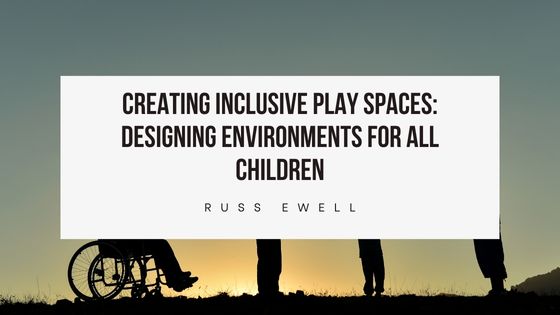Play is a fundamental aspect of childhood, fostering creativity, social skills, and physical development. However, traditional playgrounds and play spaces may not always be accessible or inclusive for all children, particularly those with disabilities or special needs. In recent years, there has been a growing emphasis on creating inclusive play spaces that accommodate the diverse needs of children of all abilities. In this blog post, we’ll explore the importance of inclusive play spaces, discuss fundamental design principles, and highlight examples of innovative, inclusive playgrounds that prioritize accessibility and inclusivity for all children.
The Importance of Inclusive Play
Inclusive play spaces are designed to accommodate children of all abilities, including those with physical, sensory, or cognitive disabilities. By creating environments that are accessible and welcoming to all children, inclusive play spaces promote social inclusion, foster empathy and understanding, and provide opportunities for children to learn and grow together regardless of their differences.
Inclusive play spaces also benefit children without disabilities by promoting cooperation, teamwork, and empathy. By interacting with children of diverse backgrounds and abilities, all children can develop a greater appreciation for diversity and inclusion, setting the stage for more inclusive communities and societies.
Design Principles for Inclusive Play Spaces
Designing inclusive play spaces requires careful consideration of children’s diverse needs and abilities. Fundamental design principles for creating inclusive play spaces include:
- Universal Design: Incorporate universal design principles to ensure play equipment and features are accessible to children of all abilities. This may include ramps, transfer platforms, and sensory-rich elements that accommodate children with mobility impairments, sensory sensitivities, or other disabilities.
- Variety and Choice: Provide various play experiences and equipment options to accommodate different interests, preferences, and abilities. Offer a mix of active play, sensory play, imaginative play, and quiet spaces to appeal to a diverse range of children.
- Safety and Accessibility: Prioritize safety and accessibility in design, ensuring that play equipment meets safety standards and is accessible to children with disabilities. Pay attention to surfacing materials, pathways, and transitions to create a safe and accessible play environment for all children.
- Inclusive Programming: Offer inclusive programming and activities that engage children of all abilities in play and social interaction. Provide opportunities for peer support, cooperative play, and inclusive activities that promote social inclusion and teamwork.
Examples of Innovative Inclusive Playgrounds
Several innovative, inclusive playgrounds around the world demonstrate the principles of inclusive design and accessibility:
- Maggie Daley Park, Chicago: This sprawling urban park features an inclusive playground with accessible play equipment, sensory-rich elements, and inclusive programming designed to engage children of all abilities.
- Morton Arboretum, Illinois: The Children’s Garden at the Morton Arboretum includes an accessible treehouse, sensory garden, and nature-inspired play areas that encourage exploration and discovery for children of all abilities.
- Touched by Olivia, Australia: Touched by Olivia is a non-profit organization that advocates for inclusive play spaces and has spearheaded the development of several inclusive playgrounds across Australia, including Livvi’s Place, which features accessible play equipment, sensory gardens, and inclusive programming.
Conclusion
Inclusive play spaces are vital in promoting social inclusion, fostering empathy, and providing opportunities for children of all abilities to learn, grow, and play together. By incorporating universal design principles, prioritizing safety and accessibility, and offering inclusive programming, communities can create environments that welcome and embrace the diversity of all children. As we prioritize inclusivity and accessibility in the design of play spaces, we can ensure that all children can experience the joy and benefits of play, regardless of their abilities or disabilities.

